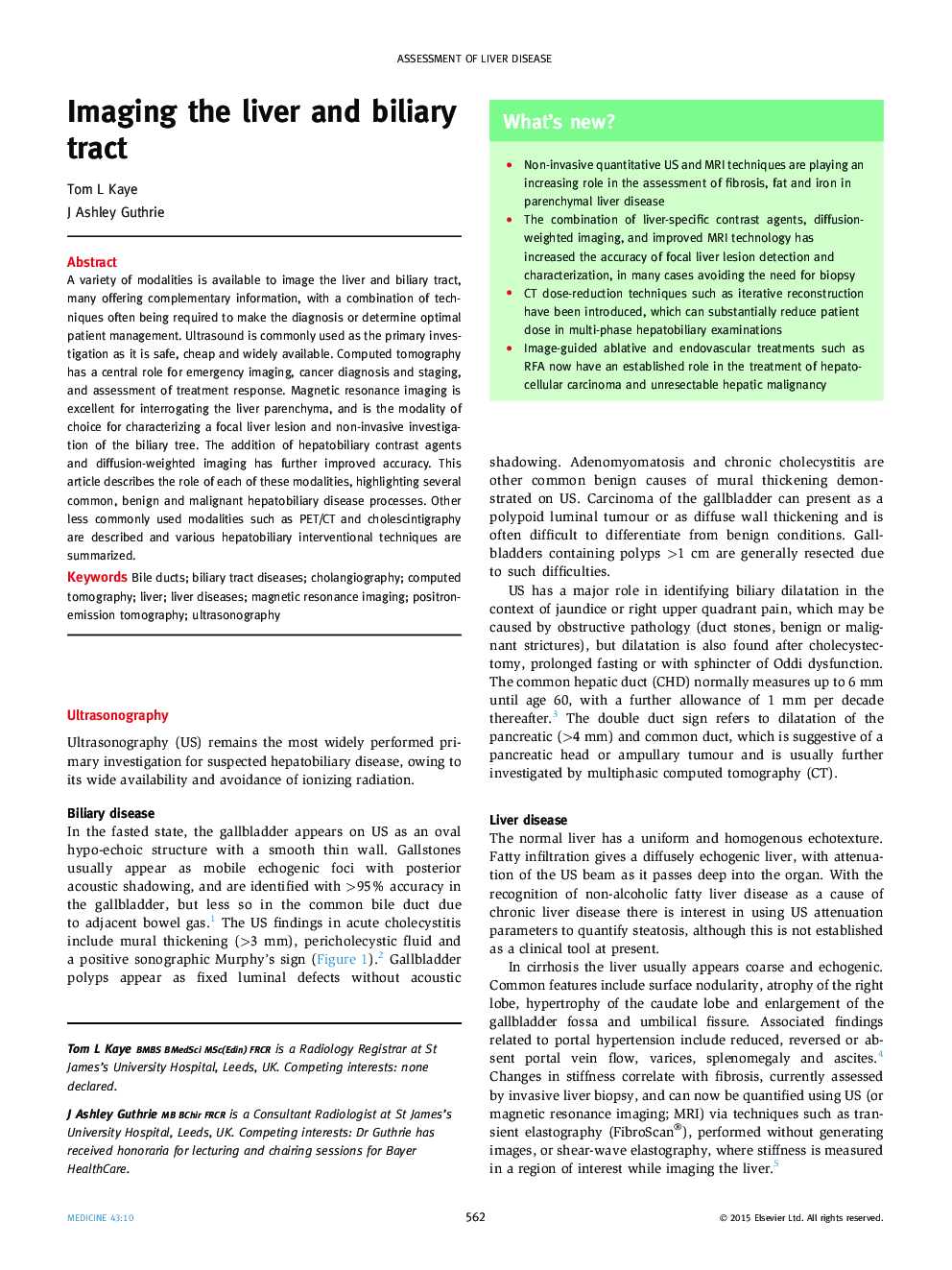| Article ID | Journal | Published Year | Pages | File Type |
|---|---|---|---|---|
| 3806377 | Medicine | 2015 | 6 Pages |
A variety of modalities is available to image the liver and biliary tract, many offering complementary information, with a combination of techniques often being required to make the diagnosis or determine optimal patient management. Ultrasound is commonly used as the primary investigation as it is safe, cheap and widely available. Computed tomography has a central role for emergency imaging, cancer diagnosis and staging, and assessment of treatment response. Magnetic resonance imaging is excellent for interrogating the liver parenchyma, and is the modality of choice for characterizing a focal liver lesion and non-invasive investigation of the biliary tree. The addition of hepatobiliary contrast agents and diffusion-weighted imaging has further improved accuracy. This article describes the role of each of these modalities, highlighting several common, benign and malignant hepatobiliary disease processes. Other less commonly used modalities such as PET/CT and cholescintigraphy are described and various hepatobiliary interventional techniques are summarized.
